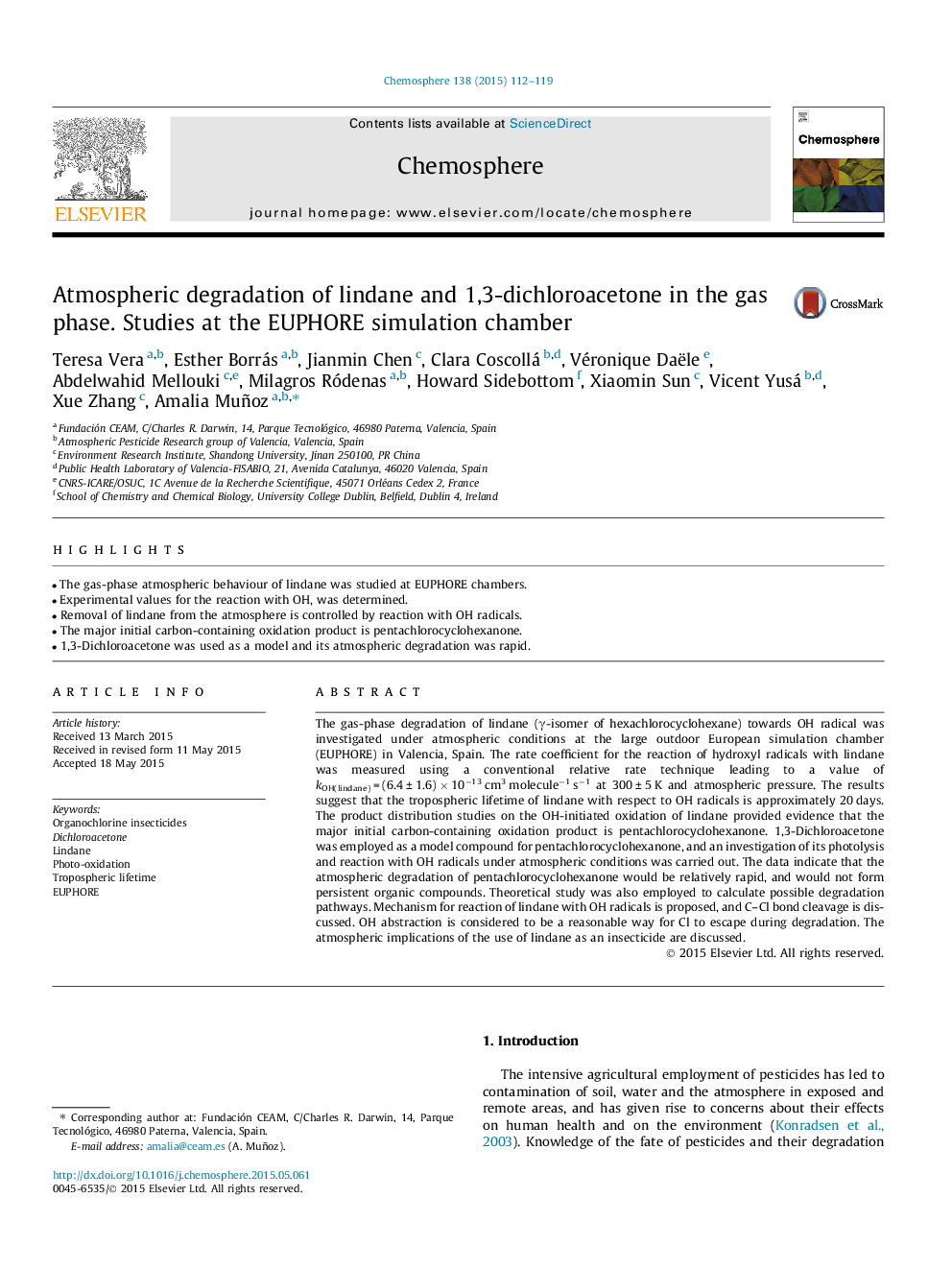| Article ID | Journal | Published Year | Pages | File Type |
|---|---|---|---|---|
| 6307415 | Chemosphere | 2015 | 8 Pages |
Abstract
The gas-phase degradation of lindane (γ-isomer of hexachlorocyclohexane) towards OH radical was investigated under atmospheric conditions at the large outdoor European simulation chamber (EUPHORE) in Valencia, Spain. The rate coefficient for the reaction of hydroxyl radicals with lindane was measured using a conventional relative rate technique leading to a value of kOH(lindane) = (6.4 ± 1.6) Ã 10â13 cm3 moleculeâ1 sâ1 at 300 ± 5 K and atmospheric pressure. The results suggest that the tropospheric lifetime of lindane with respect to OH radicals is approximately 20 days. The product distribution studies on the OH-initiated oxidation of lindane provided evidence that the major initial carbon-containing oxidation product is pentachlorocyclohexanone. 1,3-Dichloroacetone was employed as a model compound for pentachlorocyclohexanone, and an investigation of its photolysis and reaction with OH radicals under atmospheric conditions was carried out. The data indicate that the atmospheric degradation of pentachlorocyclohexanone would be relatively rapid, and would not form persistent organic compounds. Theoretical study was also employed to calculate possible degradation pathways. Mechanism for reaction of lindane with OH radicals is proposed, and C-Cl bond cleavage is discussed. OH abstraction is considered to be a reasonable way for Cl to escape during degradation. The atmospheric implications of the use of lindane as an insecticide are discussed.
Related Topics
Life Sciences
Environmental Science
Environmental Chemistry
Authors
Teresa Vera, Esther Borrás, Jianmin Chen, Clara Coscollá, Véronique Daële, Abdelwahid Mellouki, Milagros Ródenas, Howard Sidebottom, Xiaomin Sun, Vicent Yusá, Xue Zhang, Amalia Muñoz,
